

For many people, the thought of Spain conjures up images of passionate flamenco, the rousing art of bullfighting, and a rich food culture of tapas. To get to the beating heart of Spanish traditions and culture, Andalucia is the place to go.
Andalucia is the southernmost region in Spain with an area of 87,432 km sq (somewhat larger than the entire country of Austria which is 82,444 km sq). The region has an Atlantic and a Mediterranean coastline, with the Strait of Gibraltar separating the two.
Andalucia has eight provinces stretching from the southeast to the southwest of Spain, each one named for its capital city: Almería, Cádiz, Córdoba Granada, Huelva, Jaén, Málaga and Seville. Also part of Andalucia is the British Overseas Territory of Gibraltar, an isthmus that hangs down like a lady’s pearl earring into the Strait of Gibraltar from the westernmost part of Cádiz province. While each province has its own capital city, the city of Seville is also the capital city of Andalucia.
Spain’s Andalucia is a land of contrasts that has been a magnet for visitors, attracting people for thousands of years. Today, Andalucia is one of the most popular tourist destinations in the world thanks to its sandy beaches, stunning countryside, towering mountains and evidence of a human history that goes back over a million years.
Of particular interest is Andalucia’s Moorish heritage which brings a unique edge to the history, culture, and architecture in this southern region of Spain. For 800 years, Al-Andalus, as it was then known, thrived under Islamic rule until it was reconquered under Christian rule in January 1492. Andalucia still bears marks of its Moorish past, with Granada’s Alhambra being the crown jewel of the region. Learn more about Andalucia’s Moorish past here.
Here in Andalucia, Spain, you’ll find over 1,000 kilometres of coastline. Huelva and Cádiz have coastlines on the Atlantic Ocean (Costa de la Luz) while Cádiz, Málaga, Granada and Almería provinces, have a Mediterranean coastline (Costa del Sol, Costa de Almeria, and Costa Tropical). The differences are apparent from the white sands of the Atlantic shoreline with huge dunes created by a sometimes ferocious wind, compared to the craggy cliffs with secluded, hidden, fishing villages of the Granada and Almería seaboard.
This long stretch of coastline means Andalucia is home to some of Spain’s most beautiful beaches. What makes them even more attractive is Andalucia’s mild winters which attracts sun-seekers to this region of Spain all-year-round.
Seville, Córdoba and Jaén are inland provinces with no coastlines. Many of the more remote towns and villages, tucked away in the high Sierra mountains, are places where time has stood still. Here you can experience Andalucia as it has been for hundreds of years, walk for miles through hills and valleys without seeing another soul and enjoy a whole range of outdoor activities.
Andalucia is also home to Spain’s famed pueblos blancos that are known for their beauty. These so-called white towns of Andalucia consist of towns and villages with whitewashed houses, often with unique features and/or offering gorgeous countryside vistas. They can be found in the northern parts of Cadiz and Malaga provinces.
Let us take you on a short tour of Andalucia to whet your appetite. We shall start in the east in Almeria province and take you west through the coastal provinces to Huelva and then travel inland visiting Seville, Córdoba and Jaén.
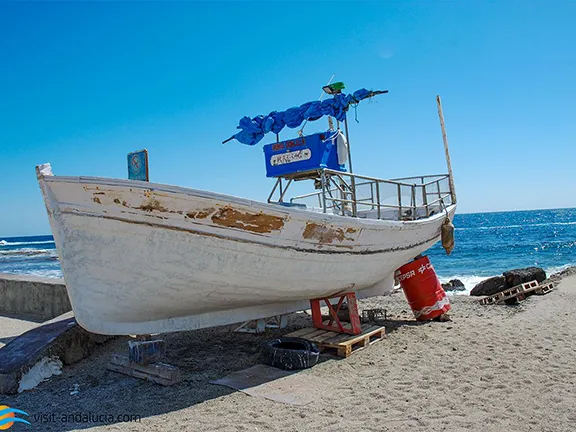
Almería is the easternmost province of Andalucia. It is also the driest area in Europe and the province with the most hours of sunshine. Here you will find the desert towns around Tabernas, where many famous ‘spaghetti westerns’ were filmed and the arid, volcanic area of the Cabo de Gata. The landscape is often described as lunar, belying the fact that Almería has some of the best beaches in Spain often with magnificent rock formations, and secluded coves with fine sand. Almería is only just being realised as a holiday destination. The main activity of economic importance is greenhouse farming, inland from the coastal resorts of Roquetas de Mar, Aguadulce, Mojacar and Vera.
During the 19th century, mining was a major industry and the mountains behind the coast and inland are dotted with the remains of the now abandoned mining enterprises. You can still find gold, garnets and sapphires, if you know where to look.
Find places to go and things to do in Almería province
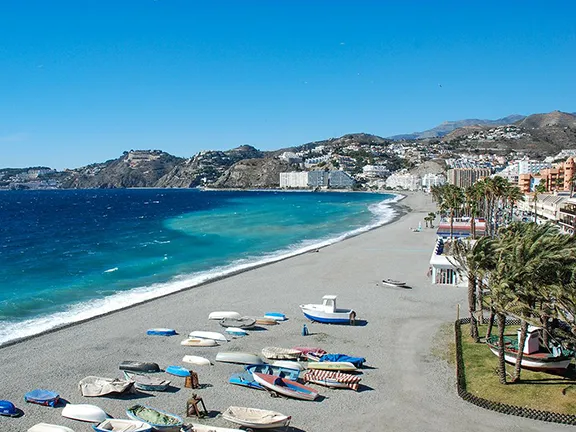
Mention Granada and people automatically think of the Palace of the Alhambra, the most visited tourist attraction in Andalucia and a glorious reminder of the splendours of the al-Andalus period.However, Granada province has much more to offer.
The Sierra Nevada mountain range, just outside and within view of the city, includes Mulhacen, the highest mountain on the Iberian Peninsula and beneath its summit, the winter sports centre at Pradollano. A two-hour drive south and you can bask on the beaches of the Costa Tropical, a favourite destination for Spanish families.
Almuñécar has been a favoured spot since before the Phoenicians arrived on the coast and is now a popular resort for Spanish families.
Inland, the Granada Geopark, mostly set in ‘badlands’, is a complete history of human endeavour in the area dating back 1.4 million years. Visit the Megalithic Park at Gorafe, an Iberian oppidum at Baza, a fossil bed recording extinct animals through the entire Quaternary period, and an Argar bronze age settlement. Geologists, historians and those just interested in the remote past could easily spend two weeks in the Geopark and see something different every day.
Find places to go and things to do in Granada province
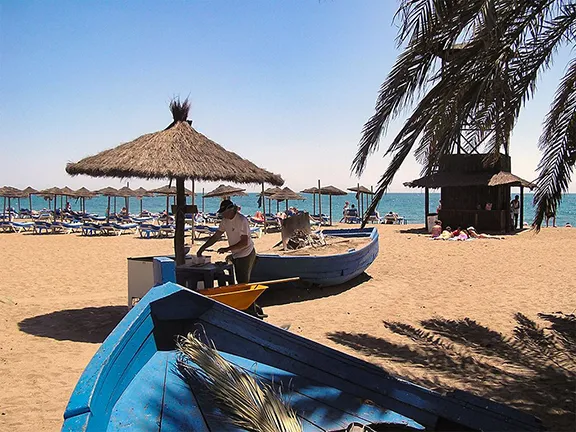
More visitors arrive in Málaga than any other province in Andalucia. The Costa del Sol with it’s famous resorts, Torremolinos, Fuengirola, Nerja and Marbella attract millions of sun worshippers every year, yet there are coastal resorts not afflicted by the ubiquitous high rise apartments and hotels, such as Estepona and Puerto de la Duquesa, where the pace of life is not quite so hectic.
Inland, white villages dot the landscape in the Serrania de Ronda and La Axarquia and further inland still, Antequera has a long history dating back to the Megalithic period. In fact, history is inescapable in Málaga province. Málaga city has an imposing Alcazaba, rivalling the one at Granada, overlooking a Roman amphitheatre. Ronda has a long history with the ancient pre-Roman town of Acinipo nearby.
Geared to the visitor, there are any number of museums, galleries and attractions including the Picasso Museum and the Automobile Museum in Málaga city, the Butterfly House at Benalmadena, the Orchid House at Estepona, the caves at Nerja, and the world famous Fuengirola Bioparc. You will find something for all the family.
Find places to go and things to do in Málaga province
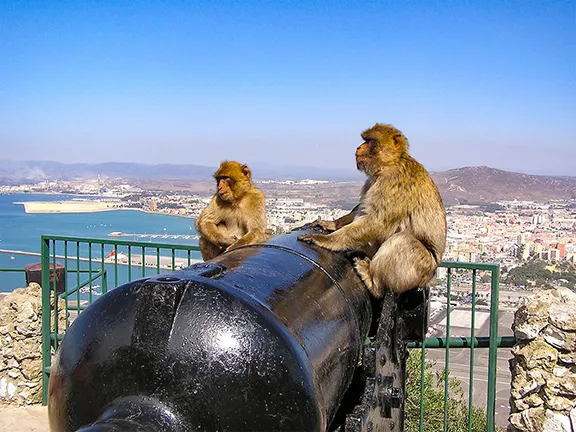
The intrepid traveller will find Gibraltar irresistible. The Rock looms ahead from whichever direction it is approached. The only road into Gibraltar, from the Spanish town of La Linea de la Concepcion, takes you through the frontier and across the runway of Gibraltar International Airport. Do not go to Gibraltar for its beaches, rather appreciate it for its history, from the Tower of Homage, erected by the Muslims to the Second World War gun emplacements perched on the highest ridge.
Gibraltar has more history, geography, geology and culture packed into its 6.8 square kilometres than any other place on earth.
Since the British took over in 1704, Gibraltar has been a melting pot of different cultures: Gibraltarian, British, Spanish, Moroccan, Jewish, Indian, Italian and Portuguese, and religions; Roman Catholic, Church of England, Baptist, Methodist, Muslim, Jewish, Hindu and others. This diversity is seen in the architecture, food and culture.
Attitudes to Gibraltar are probably expressed best by a British Chess player, Nigel Short, "Well, Gibraltar is a place which you either love or hate. I quite like it. It's a rock, that is essentially what it is. It's a British colony."
Find places to go and things to do in Gibraltar
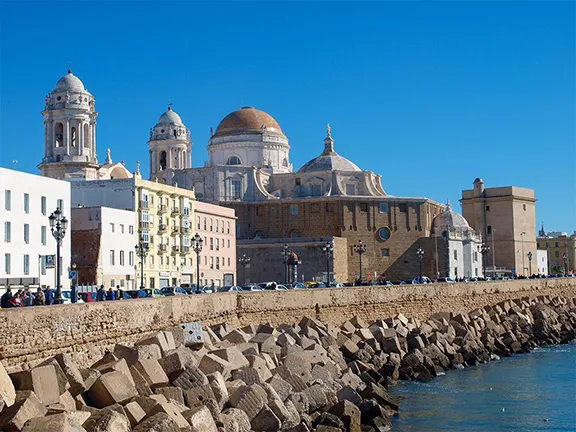
With 250 kilometres of coastline, the Costa de la Luz or Coast of Light, Cádiz is the only province with beaches facing the Atlantic Ocean and the Mediterranean Sea. The Atlantic beaches are characterised by a wide, sandy foreshore with huge dunes behind, ever moving before the winds coming off the ocean. Tarifa is reputedly the windiest place in Europe and is a mecca for wind and kite surfers. The Hurricane Hotel is well named. The low-lying land on the west coast, with its salt pans dating back 4320 years, is a haven for migratory and resident waders, a bird watchers paradise.
Inland is the wettest place in Spain, Grazalema, in the spectacular Sierra de Grazalema Natural Park. Tiny white villages cling to the sides of river gorges and valleys, the famous pueblo blanco and the quiet mountain landscape is criss-crossed with beautiful hiking trails and spectacular views.
Relatively few European tourists make it to Cádiz, which is a pity, the province boasts the oldest city in Europe and is home to the sherry industry. The people here love to party and Cádiz Carnival is the only carnival that was not banned by Franco.
Find places to go and things to do in Cádiz province
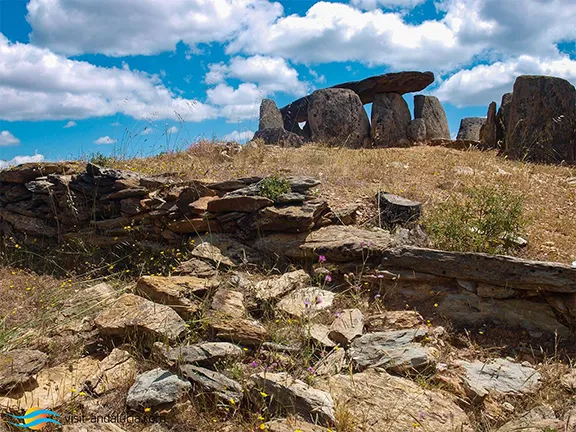
Huelva is another of Andalucia’s provinces that has not yet exploited its potential to the full. The history of the province dates back to the Copper Age, when mineral deposits were found in the Sierra Morena. Those deposits have been worked to this day at Rio Tinto and the northern part of Huelva is dominated by mining, not just the mines themselves, many of which have been abandoned since the early 20th century, but by reminders of those first metallurgists. They left behind the dolmen complex at Pozuelo and the huge Dolmen de Soto de Trigueros, dubbed ‘the first Stonehenge’.
A more recent relic of the mining industry is the Muelle de la Compania de Rio Tinto, a huge ore loading pier built by the British Rio Tinto Company Ltd, projecting into the Rio Odiel at Huelva city, now a visitors attraction in its own right.
Huelva's coastline stands out for its rugged beaches, yellow sandy coves between craggy cliffs set among pine forests, marshes, lagoons and dunes. Lovers of the sea and water sports can choose between the beaches of Ayamonte, Almonte, Cartaya, Isla Cristina, Lepe, Moguer and Punta Umbría.
Nature lovers should not miss out on the protected areas in Huelva province. The most famous of them all is the Doñana National Park. A mosaic of ecosystems that harbour a biodiversity that is unique in Europe. The marshes are of extraordinary importance for thousands of European and African birds, passing through, breeding or over wintering. Some of the species in the park are in danger of extinction, such as the Iberian imperial eagle and the Iberian lynx.
In the northern part of Huelva province, the visitor will find the Sierra de Aracena and Picos de Aroche Natural Park, a slate and sandstone massif in the western part of the Sierra Morena. Wind and rain erosion has produced gently rounded mountains divided by wide valleys. Both hilltop and valley are wooded with holm oak, cork oak and olive trees. Sheltering in the valleys are some of the prettiest white villages in Andalucia. It is a paradise for bikers and hikers and also houses one of the most decorative caves in Andalucia, La Gruta de las Maravillas, the Cave of Wonders, in the beautiful town of Aracena.
Find places to go and things to do in Huelva province
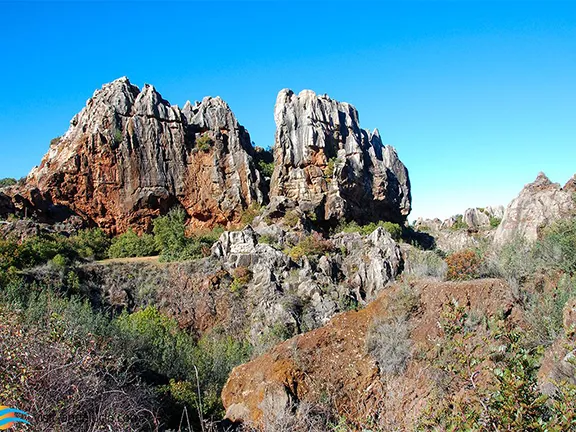
Seville city, or Sevilla, is the capital of the autonomous region of Andalucia. The city lies on the banks of the River Guadalquivir that neatly bisects the province from east to west and is one of the largest historical centres in Europe with no less than three UNESCO World Heritage Sites within its walls, the Cathedral, the Alcázar and the Archivo de Indias. The city has ‘enjoying oneself’ down to an art form, with some of the best tapas bars in Andalusia, great nightlife and an eclectic mix of stylish fashionistas and authentic ‘Sevillanos’. Seville is the heart of two bastions of Andalucian culture, flamenco and bullfighting. Countless artists, bull fighters and flamenco artists, both past and present were born and lived in the La Triana quarter of the city.
But, what about outside the city? In the north of the province is the sparsely populated Sierra Norte de Sevilla Natural Park, one of Andalucia’s largest protected areas. Few tourists make it into this park due to its remoteness but the ones that do take the trouble are impressed with the small white villages, typically Moorish, with steep winding streets leading to a castle or church. The landscape and remoteness encourage animals and birds to make the Sierra Norte de Sevilla their home. Otters feast on the trout in the Rio Huéznar and wild boar live in the forests. Deer are abundant as are rabbit, foxes, genets, Egyptian mongooses, badgers, polecats and wild cats. Birds likely to be spotted include; short-toed eagles and griffon vultures, the endangered black vulture, imperial eagle and black stork, red kites, Bonelli's eagles and eagle owls. In the woodland areas you may see azure-winged magpies, golden orioles and hawfinches.
Seville province also has its fair share of historic towns such as Écija ‘La sartén de Andalucía’ (the Frying Pan of Andalucia), an important crossroads since pre-Roman times, halfway between Seville and Córdoba. Its nickname derives not from its culinary assets, rather the high temperatures in mid summer.
Find places to go and things to do in Seville province
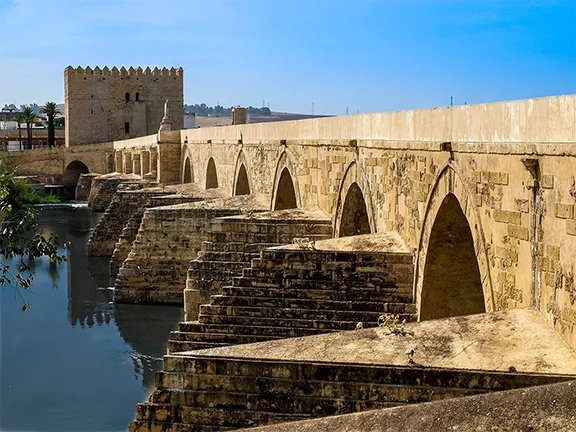
During Roman times, Córdoba was the limit of navigation up the mighty Rio Guadalquivir that bisects Andalucia from east to west and the city is still the magnet that draws people to this province. The glamorous history of the capital eclipses the entire province. In the Muslim period it was an independent emirate, later as a caliphate an important and independent administrative centre as well as a melting pot of Moorish, Christian and Jewish cultures and always competed with the neighbouring city of Granada.Even today it is a toss of the coin as to which city, Córdoba or Granada, best epitomises the 700 year Muslim occupation of al-Andalus.
The best time to visit Córdoba is May, during the Fiesta de los Patios, when those secret, secluded patios, normally hidden from the streets, are opened and the whole city bursts into vibrant colour.
Mentioning secrets, visitors should make the effort to visit the Shining City, Madinat al-Zahra, a dazzling series of palaces full of treasures never seen before, lost for over 1000 years. This is the story of a city, a story that could have been written for ‘The Arabian Nights’, a city built for a beautiful courtesan, that was built in 40 years, flourished for 40 years and then perished in flames and was forgotten for a thousand years.
In recent years, Córdoba tourist office has been trying to draw people away from the city into the Sierra Subbética south of the city that offers great hiking opportunities. Beyond the main towns are uniquely situated white villages such as Zuheros, which are worth a visit for their magnificent views alone.
Find places to go and things to do in Córdoba province
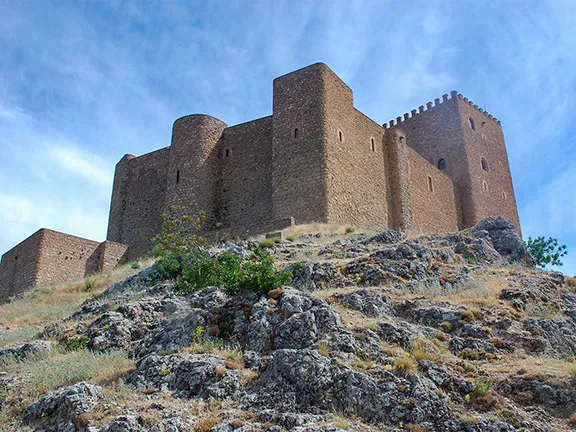
Jaén is probably the least visited province in Andalucia which is a pity because Jaén has one of the most spectacular, and largest, Natural Parks in Andalucia, the Parque Natural Sierras de Cazorla, Segura y Las Villas. This limestone massif offers limitless walking, cycling and horse riding, magnificent scenery and small, welcoming towns.
Jaén is famous for its olive oil production, about a tenth of the world’s supply. Much of the lowland scenery consists of row after row of olive trees, a rolling carpet of olive green, that abruptly finishes at the foot of mountains where both Muslim and Christians built the highest concentration of castles in Europe during the Middle Ages.
Celebrating the Renaissance after the reconquest, the UNESCO World Heritage sites of Ubeda and Baeza are known as ‘the cradle of Spanish Renaissance’. These twin towns, only 5 kilometres apart, were nicknamed 'la Dama (lady)' and 'la Reina (queen)'. You will see why when you stroll around, suitably awed by the architecture.
Historians will also be interested in the involvement of British mining companies during the 19th century exploitation of the abundant minerals found in the Sierra Morena that form the northern border of the province. The mining museums at Linares and La Carolina are not to be missed. Jaén province, with its sparse tourist infrastructure, is the place to visit if you want to experience the ‘real’ Andalucia, warm, welcoming people, a rich and diverse culinary tradition and, outside the olive groves, an unspoilt landscape.
Find places to go and things to do in Jaén province